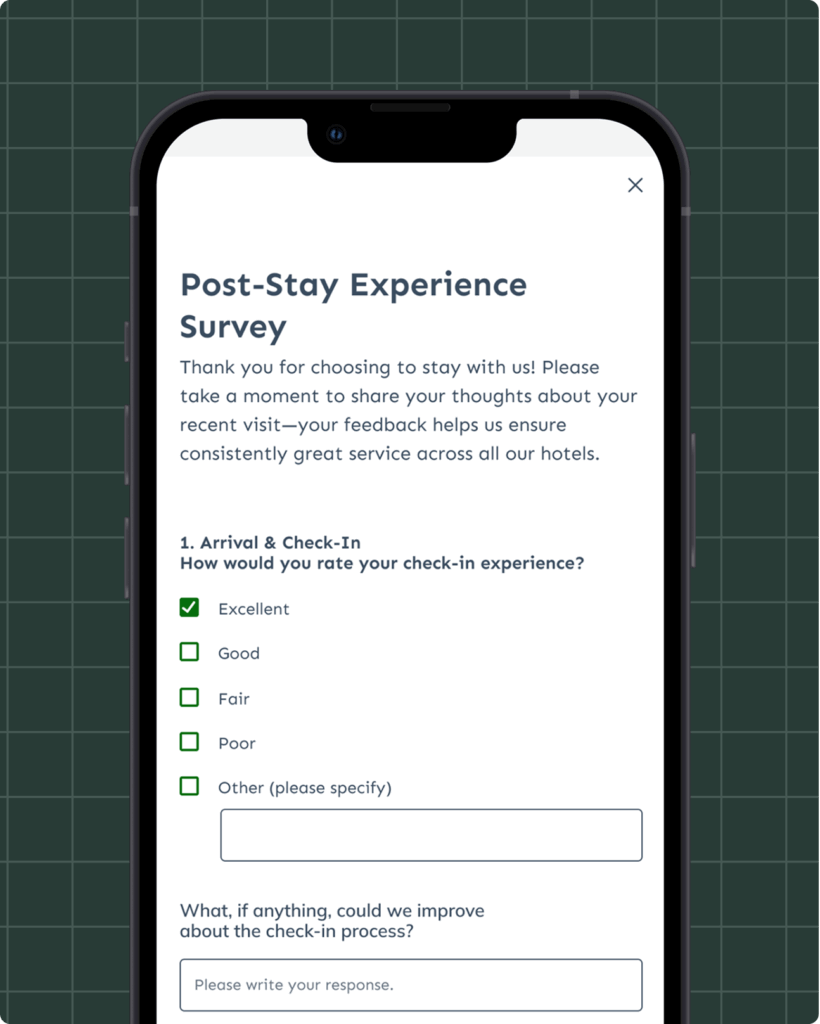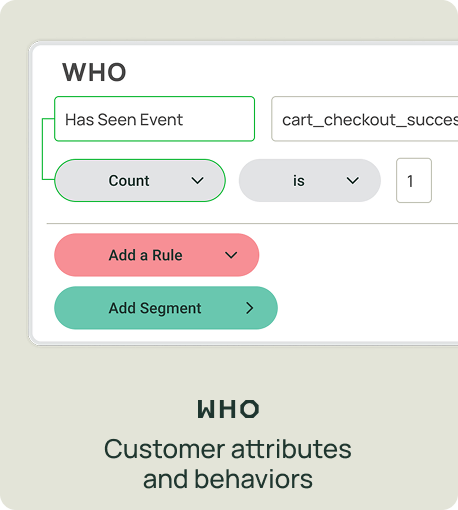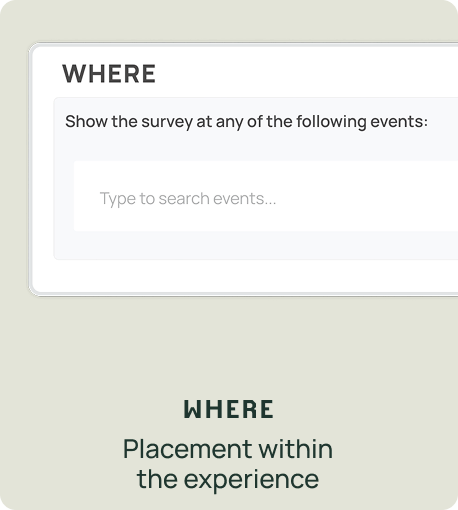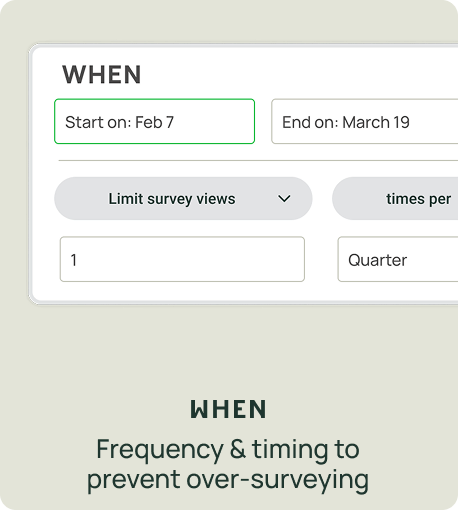Real-Time Feedback. Happier Guests. Stronger Bottom Line.

Whether it’s a guest raving about the rooftop bar, flagging a room service delay, or leaving a lukewarm review about last night’s risotto, every piece of feedback is a chance to improve, impress, and stand out.
But let’s be honest: feedback comes from everywhere. Online reviews. In-person conversations. Post-stay surveys on websites or in-app. Without a way to collect, unify and act on it all, great insights get lost, and so do opportunities to wow your guests and customers.
That’s where this guide comes in. In this e-guide we answer the following questions:
Because when you capture and connect guest feedback everywhere it happens, you create experiences worth coming back for.
Let’s dive in!
In hospitality, experiences are everything—and listening to guest feedback is how you make them unforgettable. Whether you’re managing lodging and accommodations, food and beverage operations, or travel services, guest feedback fuels better decisions and stronger loyalty.
Building an omnichannel feedback program offers a complete picture of guest sentiment across your business.
Think post-stay surveys, reservation follow-ups, comment forms, and check-in interactions. These are intentional moments where guests are asked to share how it went. Done right, they deliver structured, targeted insights that help improve operations across rooms, restaurants, and beyond.
From embedded prompts on your website or mobile app to digital menus and booking flows, feedback collected during the guest journey helps uncover friction points and highlight what’s working, whether it’s the check-in process, online ordering, or in-room tech.
Guests often share feedback in the moment—at the front desk, with a server, or during a tour. Capturing this feedback through staff reporting, mobile prompts, or digital tools helps teams solve problems before they escalate while improving experiences on the spot.
Online reviews, social media posts, and travel platforms provide a steady stream of unfiltered guest sentiment. Monitoring and responding to these channels give you a pulse on brand perception, guest satisfaction, and reputation—while delivering future guests a reason to choose you.
The following scenarios illustrate how hotels, travel operators, and restaurant brands use customer feedback to improve guest experiences, reduce employee turnover, and uncover opportunities for growth.
Specifically, they showcase how hospitality brands:
Example Scenario 1
A boutique hotel chain with more than 20 locations across the U.S. was receiving inconsistent online reviews. Some locations were praised for cleanliness and service, while others drew criticism for slow check-in or poor room maintenance. Leadership lacked a standardized method for collecting feedback across properties, making it difficult to compare performance and maintain brand standards.
Without centralized feedback, the hotel chain faced:
Using Alchemer, the hotel group implemented a standardized, multi-location guest feedback program:

Alchemer provides powerful yet intuitive targeting features to ensure surveys and interactions reach the right customers at the right time and place.
Targeting is broken into three key areas:




Example Scenario 2
A regional travel and tour company noticed increasing turnover among guides, drivers, and guest service staff—resulting in delayed departures, inconsistent tour quality, and reduced guest satisfaction. While they conducted annual HR engagement surveys, they lacked timely feedback on day-to-day employee experience.
The challenges included:
The travel company launched an always-on internal feedback program using Alchemer to collect feedback, monitor sentiment, and improve employee satisfaction:
Example Scenario 3
A fast-growing casual dining brand with locations in airports and city centers was seeing uneven guest satisfaction. While some diners praised the experience, others raised concerns about wait times, food quality, or unfriendly service, but the brand lacked structured feedback that was being solicited beyond Yelp reviews and occasional comment cards.
Without structured feedback, the brand encountered:
Using Alchemer, the restaurant chain introduced targeted feedback tools to capture guest experiences across key dining touchpoints:
Increased NPS dramatically after addressing top complaints and improving front-of-house training
Reduced negative online reviews by resolving issues in real time with on-site alerts
Improved operational efficiency by using feedback to refine food prep workflows
Clear product development strategy as menu feedback highlighted which items to improve or remove

Dunkin’, one of America’s most beloved coffee and donut brands, needed to deepen its understanding of mobile app customers as digital orders surged. With millions of loyal fans using the Dunkin’ app daily, the team needed real-time feedback on the mobile customer experience to drive smarter decisions and boost engagement.
Dunkin’ partnered with Alchemer to capture in-app feedback, enabling them to:

In hospitality, every second counts, from the front desk to the kitchen. Your feedback platform needs to keep up. Here are four key features to look for when evaluating a customer feedback solution for your hospitality business:
In hospitality, visibility drives action. Your feedback platform should offer intuitive dashboards that surface insights in real time, giving property managers, regional leaders, and corporate executives the clarity they need to monitor performance and take swift action. Role-specific views and customizable reports ensure that each team can focus on the metrics that matter most to their part of the guest journey
Feedback should be easy to give and even easier to capture. Whether guests are checking in, ordering room service, or paying their bill, your platform should meet them in the moment with low-friction digital ways to share feedback.
Collecting feedback is only half the battle—turning it into insight is where the real value lies. AI-powered analysis helps you make sense of unstructured data by detecting sentiment, identifying common themes, and flagging emerging issues early. The right platform will streamline the real insights from the noise so your team can respond to what matters most, without getting bogged down in the data.
No matter how powerful, your feedback platform must play nicely with the rest of your tech stack. Seamless integration with property management systems, booking engines, HR software, and customer relationship management tools ensures that feedback doesn’t sit in a silo. It enables a closed-loop system where insights drive real operational and guest experience improvements across departments.
The brands that win in this industry are the ones that listen deeply and respond quickly. They turn everyday feedback (the good and the bad) into better service, smoother operations, happier employees, and loyal guests who can’t wait to come back.
With the right tools and unified approach, guest and customer feedback become a real-time engine for continuous improvement and guest delight.
Let’s turn your feedback into five-star results, together. Learn more about Alchemer for Hospitality brands.
Alchemer has decades of experience helping brands turn feedback into action.
Whether it’s a guest raving about the rooftop bar, flagging a room service delay, or leaving a lukewarm review about last night’s risotto, every piece of feedback is a chance to improve, impress, and stand out.
Please provide your name and email to continue reading.